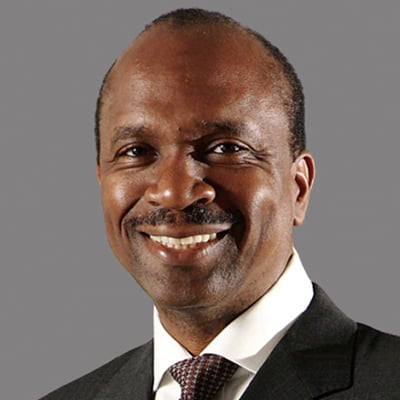The Defense Hot List
Talk about your vanishing trial.
We received scores of nominations for our Defense Hot List this year. The firms ranged from small shops doing personal injury and products liability torts to legal giants contesting the fates of industries.
But the bet-the-company bench and jury trials we wanted to highlight? They seemed in short supply during the past 12 months.
As with our two previous excursions in this area, we asked readers to nominate firms that accomplished exemplary, cutting-edge work in civil defense. We supplemented those suggestions with our own research. We looked for firms with overall impressive track records that managed at least one significant defense bench or jury verdict since July 1, 2006.
It will come as no surprise to our readers that cases are still going to trial. Substantial firms and boutique shops like Snell & Wilmer and Bowman & Brooke kept busy arguing products liability claims, for clients like Ford Motor Co., General Motors Corp. or BMW, that might look like small change individually but that have a way of adding up.
As for the universe-hangs-in-the-balance disputes that this list is all about, they were more likely to be disposed of via settlements, arbitration or pretrial motions that, however skillfully and forcefully argued, aren't the same thing as testing one's wiles and command of evidence in front of a judge or jury.
New York-based Skadden, Arps, Slate, Meagher & Flom, to name one example, coordinated epic litigation arising from HealthSouth Corp.'s collapse. The proceedings stretched from March 2003 until January of this year, and provided billions of dollars to claimants while saving the company.
For all that, Skadden didn't make the list this year.
The jury verdict that Akin Gump Strauss Hauer & Feld won in a patent litigation involving DRAM computer circuits was more what we were looking for. As contributor Emily Heller explains, this contest between electronic giants Matsushita Electric Industrial Co. - better known as Panasonic - and Samsung Electronics Co. threatened to turn into a "late-summer slog through brain-numbing minutiae of computer circuitry," and never mind that at least $300 million was at stake. Akin Gump showed how a little creativity when presenting evidence can wake up a jury and help it take your point. In the process, the firm showed its client's competitors that there are risks to bringing infringement claims.
Johnson & Johnson kept popping up as a plaintiff this year, but of the cases involving the company we were most impressed by the teamwork in Applied Medical Resources Corp. v. Ethicon Inc. When its subsidiary was accused of taking unfair advantage of its strength in the medical suture market, the company hired Sidley Austin and New York's Weil, Gotshal & Manges to mount a "virtual law firm" team defense. Contributor Peter Page reports that two high-powered litigation shops forgot about their egos to leverage this attorney's experience with juries against that one's depth in antitrust law. The resulting win helped the plaintiff in a similar action to see the light and settle.
Is that a sow's ear or a silk purse? Foot Locker Inc.'s prospects against a sacked executive's $29 million age and disability discrimination claims were not what one would call attractive. The evidence on its face was so bleak that defense counsel at Kansas City, Mo.-based Shook, Hardy & Bacon tried really hard to settle. When that didn't work, the team showed why clients hire firms with lots of resources. Staff Reporter Sandhya Bathija details how the defense immersed itself in learning the client's business, mounted moot jury trials to pinpoint the weaknesses in its own case and did its best to showcase the client's good side.
For all that, the defenders weren't sure of the outcome as the jury filed into the courtroom. Try finding that kind of drama in a settlement conference.
Kirkland & Ellis
Plaintiff's counsel had best be prepared when they enter the courtroom against 1,300-attorney Kirkland & Ellis-they can be sure that the defense team will be. The Chicago-based firm's basic strategy is to round up the evidence, test it in mock proceedings and even to offer to present its opening statement to the other side's executives-to demonstrate that the firm will aggressively try its case.
Noteworthy cases:
Leonard v. Nationwide Mutual Insurance Co., No. 1:05CV475 LTS-RHW (S.D. Miss. 2006). Trial counsel Daniel F. Attridge and Thomas A. Clare, with H. Mitchell "Mickey" Cowan of Watkins Ludlam Winter & Stennis in Jackson, Miss. The court ruled for the insurance company in the first claim by some 2,000 Mississippi policyholders challenging water-damage exclusions in their homeowner policies following Hurricane Katrina, The ruling left the insurers in some legal jeopardy, but substantially reduced the threat to insurers' long-held understanding that even though "storm surge" was not expressly excluded in policies, it still could be considered excluded flood damage.
Jones v. NL Industries Inc., No. 4:03CV229 (N.D. Miss.) Lead counsel Michael D. Jones. The jury returned a unanimous verdict for the paint manufacturer again 14 children seeking $125 million for brain damage and other health problems they attributed to lead paint. The defense pointed to other sources of contamination, including lead found in soil samples near the children's homes, and to possible congenital problems.
Arlin Adams, Trustee (for Coram Healthcare Corp.) v. Price Waterhouse LLP, No. 97 L 14456 (Cook Co., Ill. Cir. Ct. 2006).
Trial counsel Emily Nicklin and Sallie G. Smylie. In an accounting liability lawsuit, the trustee for the home health care provider sought $300 million in damages on the ground that auditors missed a major overstatement in the company's assets. The verdict came a few hours after closing arguments.
REPRINTED WITH PERMISSION FROM THE JULY 16, 2007 EDITION OF THE NATIONAL LAW JOURNAL © 2007 ALM PROPERTIES, INC. ALL RIGHTS RESERVED. FURTHER DUPLICATION WITHOUT PERMISSION IS PROHIBITED




